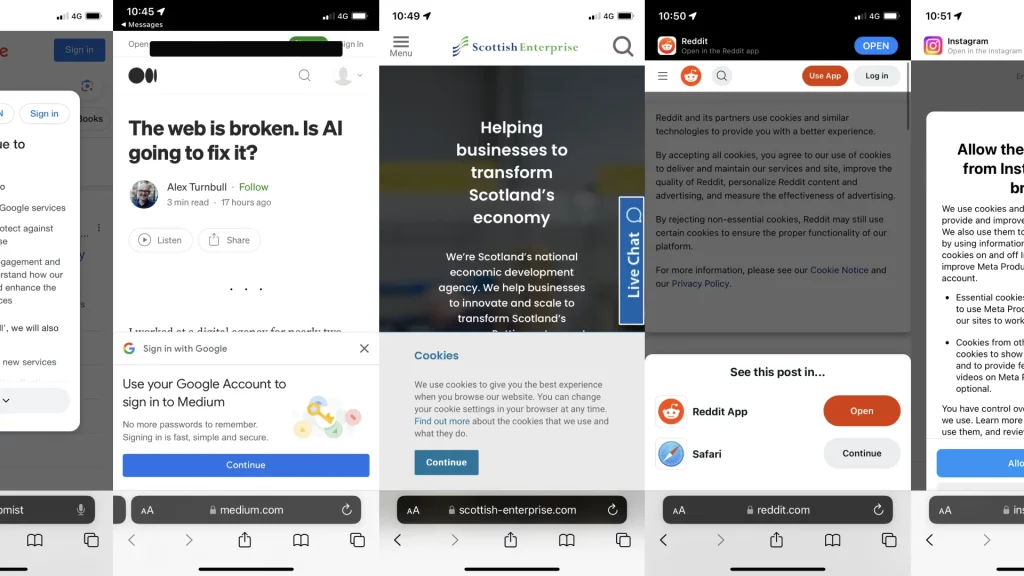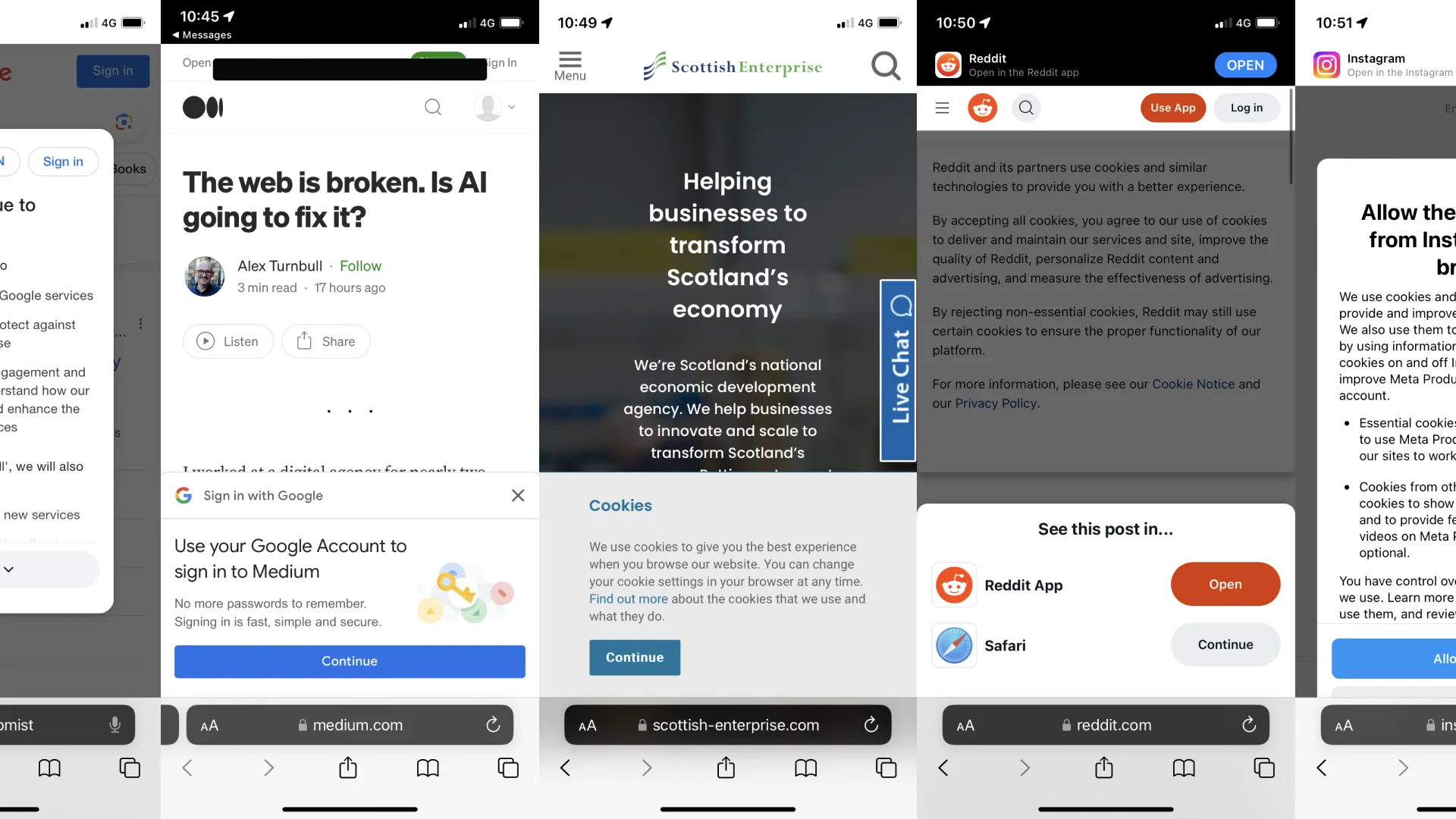I worked at a digital agency for nearly two decades; starting out as a front-end web developer, I moved into UX before we even knew what it was going to be called.
Back in the early 2000s, things were pretty simple! We didn’t have to deal with responsive design, mobile apps, accessibility legislation, cookie banners, chat bots or any of the other multiple complications that make the web such a complex place today.
When I moved into managing, coaching and mentoring other designers, I learned to advocate for simple solutions to well-understood problems. I gave this advice to clients as well — overcomplicating things quickly leads to annoyed users.
Unfortunately today’s web is far from simple. Not only have the technologies that power it advanced enormously, but the gargantuan industry that has built up around it has a hugely complex economic flow, and is often governed by seemingly impenetrable laws and regulations.
This has led to the proliferation of all kinds of tools, overlays, banners, notifications and other junk on the websites we use every day. You’ll be well aware of them, as you likely have to close them on every site you visit (though not on this one!)

These recurring annoyances were often introduced with good intentions. That marketing interstitial was supposed to drive email signups. Those cookie banners were supposed to prevent companies from misusing your personal information. The accessibility toolbar was supposed to make your website more inclusive. The chatbot pop-up was supposed to help users solve their problems faster.
But at what cost? When you personally visit a site and have to spend the first few seconds closing all sorts of stuff you’re not even slightly interested in, how does that make you feel? I bet it’s not like a valued customer.
Of course we’ve all just learned to deal with it. We put up with this horrendous experience because how else are we going to find the information we need? If you’ve been following the unprecedented rise of Generative AI, maybe you’ve already tried the alternative.
Chat bots like Open AI’s ChatGPT, Microsoft’s New Bing (which is powered by ChatGPT), and Google’s Bard offer a glimpse of what the future might look like, and it may be a future that doesn’t share any of the user-experience crimes we’ve all learned to put up with. While the monetisation strategies of these tech companies are not yet fully formed, they’re betting big on chatbots playing a major part in how humans find information from now on.
So what might that future look like? Perhaps your site becomes a data source for feeding the AI’s database, only directly serving information to robots? Or perhaps your website simply doesn’t get the same number of visitors it used to get, because users prefer to get a straightforward answer without having to close a bunch of irrelevant overlays.
We don’t know the answer to these questions yet, but in the meantime I can promise you that annoying your users with overlays, interstitials, banners and notifications is only going to push them towards simpler, faster, and more user-friendly ways of accessing your content.
Until we know how things are going to play out, website owners and managers have got a choice. They can either continue to try to squeeze every single opportunity to extract a data point from a potential customer (for ever decreasing returns), or they can take things back to basics.
I’m not saying this is going to be easy, but it doesn’t have to be like this. You could start by assessing each of those tools you’ve installed. Are the email signups you get from that banner worth it, or are people simply using your discount once and then never coming back because the experience was so painful? Is your analytics data so valuable that you have to annoy every visitor with a cookie banner every time your third-party services make a change? In short: are the trade-offs in user satisfaction actually worth it?
Nothing on the web has ever stayed still for very long, and we’re now faced with what could be the largest shift in user behaviour in decades.
How will your business respond to this challenge? Will you adapt and evolve, or will you be left by the wayside?
